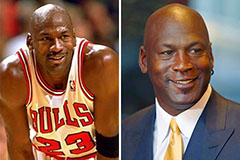Chinese culture is diverse and rich, encompassing a broad range of traditional dance types, costumes, and creative expressions that have actually been passed down through generations. At the heart of this social heritage is the thrilling elegance of Chinese dance costumes, which play an important role in showcasing the deep background and vivid spirit of Chinese art. Ancient Chinese clothing is identified by its sophistication, elaborate designs, and making use of symbolic shades and patterns that commonly show social status, importance, and also different elements of nature. From the streaming silks of the Hanfu to the sensational brocades and embroidered motifs of the Tang empire, these garments not only serve functional functions but additionally take a breath life into the tales of previous dynasties and the worths of Confucianism, which highlights harmony, regard, and the significance of community.
An essential element of many Chinese dance types is making use of props, elevating the efficiency's visual phenomenon and giving depth to the narration. One such prop that is quintessential to Chinese dance is the fan. Chinese fan dance, which has actually been exercised for centuries, combines the art of dance with the appeal of the folding fan. These delicate and ornately developed followers offer not only as practical devices but likewise as tools of expression-- each activity revealing a tale of poise and elegance. Professional dancers possess the fans with enchanting skill, developing fluid movements and captivating visual patterns that improve the total efficiency. The careful coordination of hand motions and fan choreography produces an aesthetic verse that mirrors the consistency and equilibrium integral to Chinese looks.
The Chinese dragon dance is another traditional art type that captivates target markets and represents cultural worths. The intricate decorations on the dragon costume additionally enhance its allure, showcasing the creativity and workmanship that define traditional Chinese cultural expression.
Wushu, a martial art with deep origins in Chinese society, highlights elegance, dexterity, and the fluidity of motion. The unison of martial arts and traditional clothing lights up the seamless blending of art and discipline, commemorating centuries of Chinese virtuosity while personifying the spirit of physical quality.
The relevance of traditional clothing prolongs past plain aesthetics; it additionally envelops the significance of national clothing and Asian costume. Different regions and ethnic teams within China flaunt their own variations and designs of traditional dress, highlighting the nation's unrivaled diversity. Each ethnic minority, such as the Miao, Yao, or Tibetan people, attributes special clothing styles that are frequently embellished with vivid embroidery, intricate beadwork, and handcrafted devices. These garments frequently serve not only as day-to-day wear but can additionally note significant life occasions, such as wedding events and festivals. The beauty of these costumes is that they can narrate concerning the wearer's identification, customs, and social heritage, weaving a rich tapestry of the complex history of China.
For traditional professional dancers, costumes are oftentimes custom clothing made especially for efficiency, tailored to enhance the visual influence of their motions. Costume style plays an essential role in dance, with the selection of products, colors, and patterns all carefully taken into consideration to stimulate the desired feelings and themes of the efficiency.
With dance, costume, and various imaginative expressions, the appeal of Chinese culture remains to reverberate with individuals of all backgrounds and ages. The art of performing, embellished in fancy costumes that inform tales of the past, becomes a bridge in between generations. Each dancer, whether executing the lion dance, participating in the elegant flow of wushu, or sharing themselves with the art of fan dance, takes a breath life into old-time customs that celebrate resilience, unity, and the withstanding human spirit.
The exploration of traditional Chinese dance and costumes likewise welcomes a deeper admiration of the significance integral in patterns and colors, which reflect the approaches and worldviews loved by Chinese society. As seen in the value of colors, red represents good luck and happiness, while blue often represents elegance and tranquility. Comprehending the social context of these elements motivates greater respect for the art kinds and their practitioners, highlighting the significance of social conservation and the power of narration through dance and clothing.
The elegance of traditional Chinese dress prolongs beyond performance, penetrating day-to-day life and culture. During such events, it is typical for participants to put on traditional clothes that aligns with the event's styles, even more click here uniting the area through a common adoration of their cultural heritage.
In a globalized globe, the ongoing appreciation for and expedition of traditional Chinese clothing and performances act as a pointer of the importance of cultural identity. As musicians and craftsmens work to revitalize these ageless practices, they educate brand-new generations about their heritage, promoting a sense of pride and link to their roots. Traditional dance and costume not just captivate yet also bring the weight of historical narratives, lessons for future generations, and a storage tank of shared social understanding.
In addition to the abundant background of traditional clothing, Chinese dance serves as a powerful expression of social identification. One of the most visually captivating kinds of Chinese efficiency art is the lion dance, which typically accompanies parties such as the Lunar New Year and various other joyful occasions.
Finally, Chinese dance costumes, ancient clothing, and the many dynamic efficiencies envelop an abundant heritage that proceeds to charm and influence both audiences and entertainers alike. From the breath-taking visuals of lion and dragon dancings to the subtle style of fan dances, Chinese society is a large sea of creative expressions that encompass centuries of practice. The national clothing shows a variety that can only be located in a country as complex and expansive as China, showcasing the special stories and identifications that stay within each ethnic group. As time marches onward, the commitment to protecting these traditions with efficiency art, costume design, and social celebrations ensures that the vibrancy of Chinese culture remains to life, captivating hearts and minds around the globe.
 Charlie Korsmo Then & Now!
Charlie Korsmo Then & Now! Michael Jordan Then & Now!
Michael Jordan Then & Now! James Van Der Beek Then & Now!
James Van Der Beek Then & Now! Tyra Banks Then & Now!
Tyra Banks Then & Now! Jaclyn Smith Then & Now!
Jaclyn Smith Then & Now!